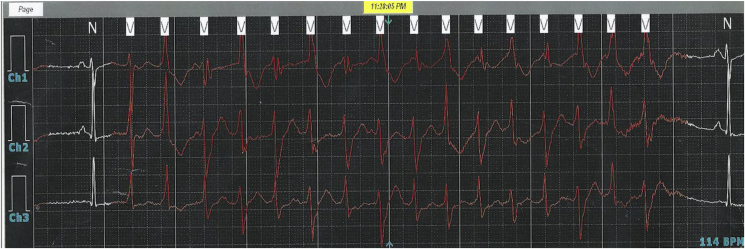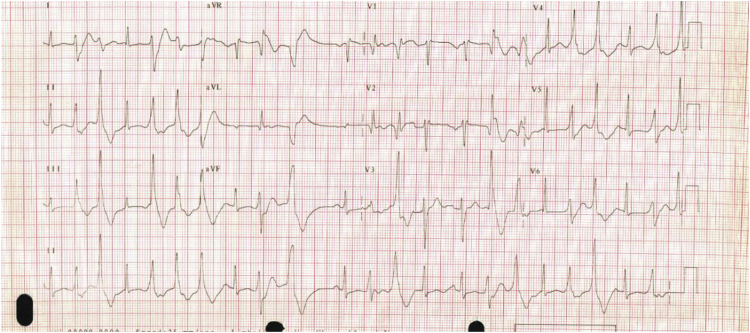Andersen-Tawil syndrome screening
Jump to navigation
Jump to search
|
Andersen-Tawil syndrome Microchapters |
|
Diagnosis |
|---|
|
Treatment |
|
Case Studies |
|
Andersen-Tawil syndrome screening On the Web |
|
American Roentgen Ray Society Images of Andersen-Tawil syndrome screening |
|
Risk calculators and risk factors for Andersen-Tawil syndrome screening |
Editor-In-Chief: C. Michael Gibson, M.S., M.D. [1]; Associate Editor(s)-in-Chief: Vamsikrishna Gunnam M.B.B.S [2]
Overview
There is insufficient evidence to recommend routine screening for Andersen-Tawil syndrome. But when a patient with positive KCNJ2 mutation follow the patient with ECG and holter monitoring.
Screening
- There is insufficient evidence to recommend routine screening for Andersen-Tawil syndrome.
- But when a patient with positive KCNJ2 mutation and have no symptoms in Andersen-Tawil syndrome yearly screening with the following should be considered:
- A 12-lead ECG[1][2][3]
- 24-hour Holter monitoring


References
- ↑ Adam MP, Ardinger HH, Pagon RA, Wallace SE, Bean LJH, Stephens K; et al. (1993). "GeneReviews®". PMID 20301441.
- ↑ Spillane, J; Kullmann, D M; Hanna, M G (2015). "Genetic neurological channelopathies: molecular genetics and clinical phenotypes". Journal of Neurology, Neurosurgery & Psychiatry: jnnp-2015–311233. doi:10.1136/jnnp-2015-311233. ISSN 0022-3050.
- ↑ Fernlund E, Lundin C, Hertervig E, Kongstad O, Alders M, Platonov P (2013). "Novel mutation in the KCNJ2 gene is associated with a malignant arrhythmic phenotype of Andersen-Tawil syndrome". Ann Noninvasive Electrocardiol. 18 (5): 471–8. doi:10.1111/anec.12074. PMID 24047492.
- ↑ "Recurrent syncope in the Andersen Tawil syndrome – Cardiac or neurological?".
- ↑ "Recurrent syncope in the Andersen Tawil syndrome – Cardiac or neurological?".